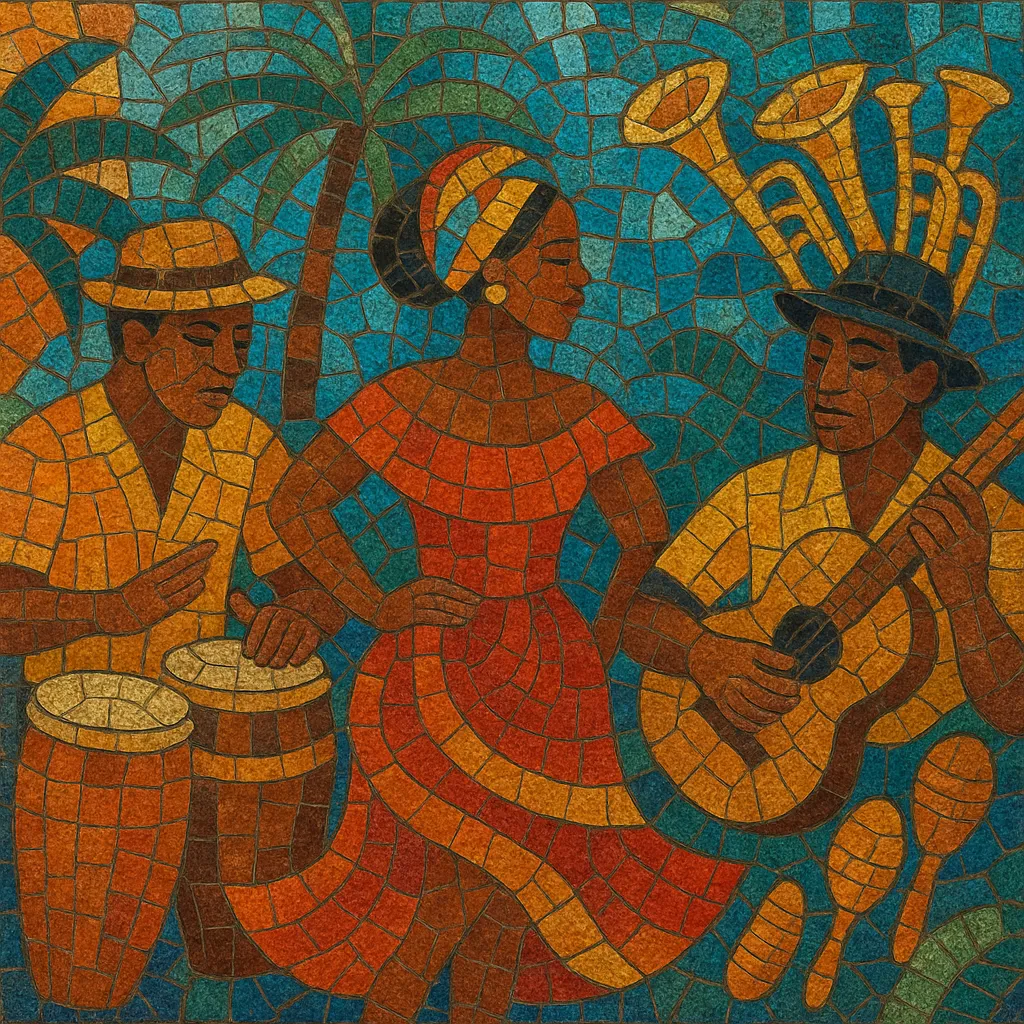Caribbean music is an umbrella term for the interconnected popular and traditional styles that emerged across the islands and coastal rim of the Caribbean basin. It blends West and Central African rhythmic sensibilities and call-and-response singing with European (Iberian, French, British) dance forms, harmonies, and instrumentation introduced during the colonial era.
Hallmark traits include polyrhythmic percussion, syncopation, and clave-based timelines (2–3 or 3–2), as well as the interplay of tumbao bass lines, guajeo/tres riffs, and horn stabs. Typical instruments and timbres range from hand drums (congas, bongos), timbales, maracas and güiro, to steelpan, brass sections, cuatro and tres, guitar skank, and electric bass. Lyrics move fluidly among English, Spanish, French/Antillean Creoles, and Dutch dialects, addressing themes of love, celebration, humor, sharp social commentary, and identity.
As a transnational sound shaped by migration, carnival traditions, and diasporic exchange, Caribbean music birthed globally influential genres including son, rumba, merengue, compas, calypso, ska, reggae, dancehall, zouk, soca, salsa, bachata, and reggaeton.
The foundations of Caribbean music were laid during the colonial period, when enslaved Africans brought polyrhythms, call-and-response forms, and ritual drumming that survived in secular and sacred contexts. European settlers and military bands introduced dance forms (contradanza, quadrille, waltz, mazurka), harmony, and orchestral/brass instrumentation. Catholic, Protestant, and Afro-syncretic religious traditions contributed melodies, liturgical song, and processional rhythms that fed into public festivities and proto-carnival.
By the late 19th century, distinct popular styles crystallized: in Cuba, the habanera and danzón spread internationally, while son welded Afro-Cuban rhythms with Spanish guitar/tres. In Trinidad, calypso took shape as a witty, topical song tradition; in the Dominican Republic, merengue consolidated as a national dance; and in Haiti, méringue set the stage for later compas. Steelpan evolved in Trinidad in the 1930s–50s from tamboo bamboo ensembles, becoming a signature island timbre.
Big-band jazz and Afro–Latin crosscurrents in Havana and New York catalyzed mambo and, later, salsa. Jamaica’s sound system culture birthed ska in the late 1950s, then rocksteady and reggae in the 1960s–70s, alongside studio innovations that yielded dub. In Trinidad, soca modernized calypso with a heavier dance orientation, while Haiti’s compas direct and the French Antilles’ zouk (spearheaded by Kassav’) modernized dance music with electric instrumentation and studio polish. Bachata in the DR moved from marginal status toward mainstream acceptance.
Dancehall took Jamaican music into digital production and worldwide club culture. Reggaeton emerged in Puerto Rico (with roots in Panamanian reggae en español) by fusing dancehall dembow, hip hop, and Latin pop. Diasporic communities in the US and Europe amplified Caribbean sound system practices, influencing UK genres (2 Tone, jungle, dubstep) and global pop/EDM. Today, Caribbean idioms continue to circulate transnationally through carnival circuits, streaming platforms, and cross-genre collaborations.
Across the region, carnival and street processions, sound systems, and community fêtes are core performance spaces. Lyric traditions embrace satire, double entendre, protest, spirituality, and storytelling, reflecting the Caribbean’s history of resistance, hybridity, and celebration.


